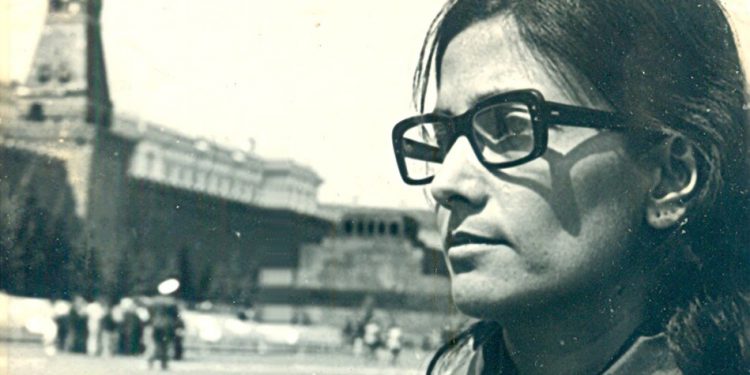Nandini Satpathy, the formidable Minister of State for Information & Broadcasting in Indira Gandhi’s government, played a pivotal role during the 1971 Bangladesh Liberation War. This war was not just a conflict between East and West Pakistan but a profound clash of cultures. On one side were the meat-eating Punjabi Pathans of the Northwest, and on the other were the East Indian Muslims and Hindus, bonded by their shared struggles with cyclones, droughts, and famines, sustaining themselves with humble portions of fish and rice.
The 1971 war marked the liberation of a culture discovering its depth and strength—a renaissance of the Bangla nationalist spirit. During this tumultuous period, Nandini Satpathy took it upon herself to help set up the Swadhin Bangla Betar Kendra (Radio of Independent Bangladesh). The war was waged not only on the frontlines but also on the powerful medium of radio waves. Programs like Agnishiksha (The Flame) for freedom fighters, Jagarani (Awakening), a revolutionary musical program, Rakta Shaskhar (Impression in Blood), a nationalist literary program, and Chorom Potro (Letter Ultimate) hosted by MR Akhtar, broadcasted nationalist sentiments, galvanising civil society and aiding the Mukti Bahini, the under-equipped liberation front.
When the transmitter at Chittagong was bombed by the forces of Yahya Khan, she facilitated the setting up of a radio station in Calcutta. She oversaw the workings of the day and the public broadcasts which in modern-day warfare are as important as the foot soldier. Her strategic use of media played a crucial role in shaping international opinion about the atrocities committed by the Pakistani army. An article in the April 5, 1971, issue of Pakistan Affairs quoted the Washington Post’s Lee Lescaze criticising the Indian press for influencing global views by broadcasting reports from the Free Bangla Radio. The media’s account was inseparable from the events, creating new sentiments of nationalism and the idea of the liberation force or the Mukti Bahini given by the philosophers and poets of the day, preceded its creation.
The cultural lines along which Bangladesh was liberated resonate deeply with many, including Lubna Marium, artistic director at Shadhona in Dhaka. “Except Delhi and Kolkata, the rest of India doesn’t understand what Bangladesh stands for,” she says. Despite this, the country’s spiritual heritage, with its bauls, boyatis, and snake cults, has persisted. Yet, regressive ideas have been creeping in, with parents questioning traditional practices. “In Bangladesh, we aren’t even conscious of somebody’s religion. Disturbingly, that is now changing.”
Nandini Satpathy’s prescient warnings about the dangers of extremism echo louder today. Her efforts to protect minorities and foster a secular, inclusive Bangladesh are reminders of the vigilance needed to preserve these values
This cultural and religious fabric is something Nandini Satpathy remembered as she fought for the freedoms that 1971 tore apart and stitched back together. Her legacy continued as she translated Taslima Nasreen’s Lajja into Oriya, bringing to light the struggles of minorities in a rapidly changing Bangladesh. Nasreen’s Lajja depicts the plight of a Hindu family in post-1992 Bangladesh, mirroring the persecution Satpathy had fought against decades earlier.
Nandini Satpathy, India’s I&B minister and Indira Gandhi’s friend, had crossed borders to help the Mukti Bahini with arms, money and to oversee that a nation comes together in letter and spirit. Her dismay at the beginning of radicalism and the decline of the youth taking over a nation, have led to this day. In 2013, she was posthumously honoured with the title Friends of Liberation War Honour along with 69 international allies for their contributions to the 1971 Liberation War. “I wish more people in India knew about the contributions she made to our freedom struggle and to the development of the identity of a culture different from the one it freed away from,” feels Quazi Sazzad Ali Zahir, a veteran of the Bangladesh Liberation War. The Bangladesh government awarded him the Bir Protik gallantry award and a Padma Shri by the Indian government at the 50th anniversary of the war.
Fast forward to August 2024, and Bangladesh finds itself amidst another crisis. The vandalisation of Bangabandhu’s statue symbolises the ongoing tensions and the rising tide of radicalisation. Satpathy’s prescient warnings about the dangers of extremism echo louder today. Her efforts to protect minorities and foster a secular, inclusive Bangladesh are reminders of the vigilance needed to preserve these values.
Nandini Satpathy’s contributions to the 1971 war and her advocacy for justice and human rights have left an indelible mark on South Asian history. Her translation of Lajja and her unwavering support for Bangladesh’s minorities underscore her enduring legacy. As Bangladesh grapples with its current challenges, the principles she championed remain as relevant and necessary as ever.
In Kazi Nazrul Islam’s poem Bidroh (Rebellion), the call to defy oppression and reclaim dignity is both stirring and profound, when he writes, “O, my brothers! Stand up and take your stand, for the dawn of freedom is at hand. Shatter the chains that bind your soul, rise in rebellion, and reclaim your goal.”
As Nazrul’s words resonate with the spirit of rebellion and resilience that was once needed to deliver a nation from genocide, it becomes crucial for today’s generation to accept that freedoms are inherited and earned by people like Bangabandhu Sheikh Mujibur Rahman whose vandalised statue stands as a tragic reminder of the fragility of these freedoms. Bangabandhu, who led Bangladesh to independence and rescued it from the horrors of genocide, symbolises the triumph of liberty and human dignity. The desecration of the structures erected in his honour underscores a concerning erosion of the values he fought for.
The writer is the biographer of Nandini Satpathy






































